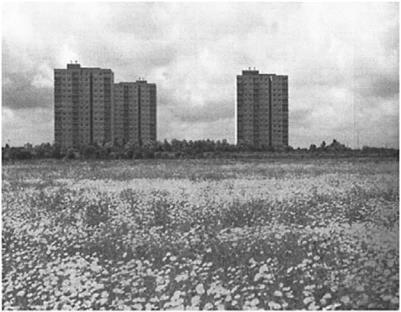Dividing herbaceous ecological plantings into the two categories of naturalistic or wildlooking and non-naturalistic is an artificial exercise in one sense, suggesting that such plantings fall into one category or the other. In reality, there is a continuum from wildlooking to highly-designed, with many intermediate points. Naturalistic or wild-looking herbaceous planting tends to rely for its effect on the overall appearance of the plant communities, whereas non-naturalistic planting tends to rely more on the properties of individual species. However, although it is usually the nature of the planting that defines the perceived degree of naturalness, this is not always the case. The context of the planting can also play a very important role. For example, the meadow plantings by the charity Landlife in Knowsley, Liverpool, on empty urban spaces within public housing developments, clearly have a completely different context and function to naturalistic prairie-style planting in a private garden.
However, given that one of the main methods by which people categorise landscape is the degree of naturalness, the basic dichotomy of naturalistic and non-naturalistic is still a convenient way of structuring a discussion of public attitudes to these kinds of plantings (Kaplan and Kaplan 1989).
Naturalistic ecological herbaceous plantings
Whilst research into public preference for natural and natural-looking woodland landscapes has been continuing since the 1960s, interest in the public
 |
11.10
A wildflower meadow created by the charity Landlife in Knowsley, Liverpool
|
|
11.9
Rosemary Weiss’s pioneering steppe planting in the West Park, Munich,
Germany
perception of ecological plantings of herbaceous vegetation in urban landscapes in the West is relatively recent; a reflection of the fact that such vegetation has never been common in public settings, even in Germany where such vegetation has long been admired. One of the first contemporary examples was Rosemary Weisse’s steppe planting in the West Park, Munich, carried out in 1979 (Figure 11.9).
Although there is considerable anecdotal evidence, particularly about public reactions to the mass meadow style plantings, there is very little published research about the public perception of any of these different approaches.
The anecdotal evidence suggests that many people react extremely positively to meadow-style plantings whilst they are in flower. For example, a local resident made the following comments about one of these plantings by the charity Landlife, in Knowsley, Liverpool (Figure 11.10):
It has been my good fortune to live opposite what was once a derelict site, full of rubbish and ugly to behold… It has now been transformed to an attractive open space. From spring onwards you could see the start of young growth plus lots of wildlife. Midsummer, the colours of different flowers with a background of mown grass plus walkways. It would be
very heart warming if the same could be done for the lots of exbuilding sites all over the country.




